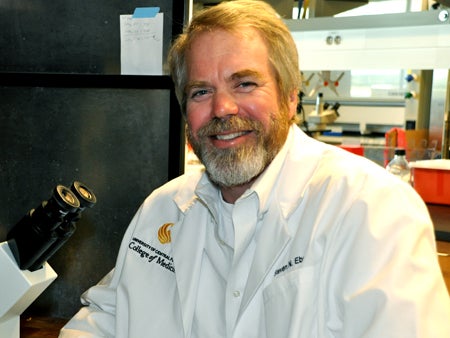In his University of Central Florida lab, Steven Ebert engineered stem cells with the same enzyme that makes fireflies glow. The “firefly” stem cells glow brighter and brighter as they develop into healthy heart muscle, allowing doctors to track whether and where the stem cells are working.
Researchers are keenly interested in stem cells because they typically morph into the organs where they are transplanted. But why and how fast they do it is still a mystery. Now Ebert’s cells give researchers the ability to see the cells in action with the use of a special camera lens that picks up the glow under a microscope.
“The question that we answered was, ‘How do you follow these cells in the lab and find out where they’re going?’” said Ebert, an associate professor in UCF’s College of Medicine.
If doctors can figure out exactly how the cells repair and regenerate cardiac tissue, stem cell therapies could offer hope to more than 17.6 million Americans who suffer from coronary disease. The glow of the enzyme also means therapies would no longer require cutting into patients’ chest cavities to monitor the healing.
The study, funded by the National Institutes of Health and the American Heart Association, is a featured cover story in this month’s highly ranked Stem Cell and Development Journal.
Now that scientists can track the stem cells, Ebert said he hopes to use them in disease models to determine how they heal a damaged heart and what conditions are most suitable for the stems cells to thrive.
Ebert’s team includes Ramana K. Kammili, David G. Taylor, Jixiang Xia, Kingsley Osuala and Kellie Thompson of UCF and Donald R. Menick of the Gazes Cardiac Research Institute at the Medical University of South Carolina in Charleston.
Ebert is an associate professor in the Burnett School of Biomedical Sciences in the College of Medicine. He is also director of the Focused Individualized Research Experience (F.I.R.E.) module at the College of Medicine. He joined UCF in 2005 after holding various positions at Georgetown University Medical Center in Washington, D.C., for several years. He has a Ph.D. in molecular genetics from Ohio State University, and he completed a postdoctoral fellowship in molecular developmental neurobiology at the Stanford University School of Medicine in California.
